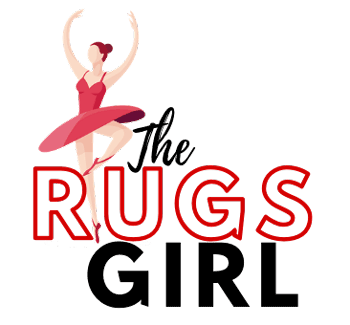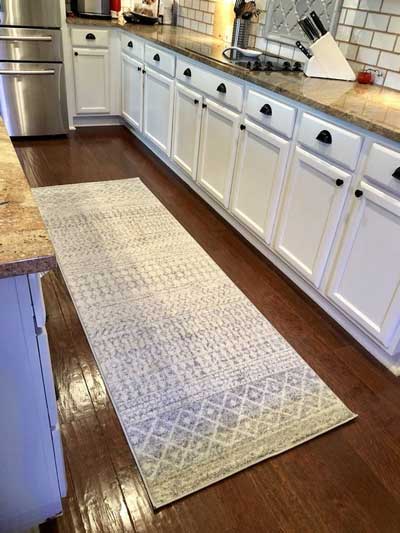Are Polyester Rugs Toxic?
Polyester rugs are a common choice for many homeowners who want to add some color and warmth to their floors. They are usually affordable, durable, and easy to clean. However, are polyester rugs toxic? And if so, what are the health risks of having them in your home?
In this article, we will answer these questions and more. We will also provide some tips on how to choose safer and more eco-friendly alternatives to polyester rugs.
Contents
What is Polyester?
Polyester is a synthetic fiber made from plastic. It is derived from petroleum, a non-renewable fossil fuel that has a high environmental impact. Polyester is widely used in the textile industry to make clothes, carpets, curtains, and other products.
Polyester rugs are made of synthetic fibers that are spun together to create a fabric. They can have different textures, patterns, and colors depending on the type of polyester used and the manufacturing process.
Why are Polyester Rugs Toxic?
Polyester rugs are toxic because they contain harmful chemicals and emit volatile organic compounds (VOCs) that can affect your health and indoor air quality. Some of the chemicals and VOCs found in polyester rugs are:
- Phthalates
- These are plasticizers that make polyester soft and flexible. They can leach out of the rug and enter your body through inhalation or skin contact. Phthalates have been linked to hormone disruption, reproductive problems, birth defects, and cancer.
- Bisphenol A (BPA)
- This is a chemical that affects hormones and can interfere with the endocrine system. BPA can also leach out of polyester rugs and enter your body through inhalation or skin contact. BPA has been associated with infertility, diabetes, obesity, breast cancer, and prostate cancer.
- Perfluoroalkyl substances (PFAS): These are stain repellents that make polyester rugs resistant to water, oil, and dirt. They can also leach out of the rug and enter your body through inhalation or skin contact. PFAS are known as “forever chemicals” because they do not break down easily in the environment or in the body. PFAS have been linked to liver damage, thyroid disease, immune system disorders, developmental problems, and cancer.
- Flame retardants
- These are chemicals that make polyester rugs less flammable. They can also leach out of the rug and enter your body through inhalation or skin contact. Flame retardants have been linked to neurological damage, hormonal disruption, reduced fertility, and cancer.
- Antimicrobials
- These are chemicals that prevent the growth of bacteria, fungi, and mold on polyester rugs. They can also leach out of the rug and enter your body through inhalation or skin contact. Antimicrobials have been linked to allergic reactions, respiratory concerns, skin irritation, and antibiotic resistance.
- VOCs
- These are gases that evaporate from polyester rugs and other sources in your home. They can cause headaches, nausea, dizziness, eye irritation, nose irritation, throat irritation, asthma attacks, and long-term health effects.
Best Rug Under Dining Table
EARTHALL Cotton Buffalo Checkered Area Rug
It is made from cotton: This is a very durable and easy to clean rug material for high traffic places.
Hand-woven
Farmhouse checkered design
The fabric
Grace period
How to Avoid Polyester Rugs Toxicity?
The best way to avoid polyester rugs toxicity is to avoid buying or using them in your home. However, if you already have them or cannot afford to replace them right away, here are some tips on how to reduce your exposure:
- Ventilate your home regularly by opening windows and doors or using fans or air purifiers.
- Vacuum your rugs frequently with a HEPA filter to remove dust and particles that may contain chemicals.
- Wash your hands after touching your rugs or wear gloves if possible.
- Keep children and pets away from your rugs as they are more vulnerable to chemical exposure.
- Choose organic or natural cleaning products instead of harsh chemicals that may react with your rugs.
- Dispose of your old polyester rugs properly by recycling them or taking them to a hazardous waste facility.
What are the Least Toxic Rug Materials?
The least toxic rug materials are natural fibers that do not contain any harmful chemicals or VOCs. Some examples of natural rug materials are:
- Wool: Wool is a natural fiber that comes from sheep or other animals. It is soft, warm, durable, fire-resistant, stain-resistant, and biodegradable. Wool does not emit any VOCs or require any chemical treatments. However, some wool rugs may contain pesticides or dyes that can be harmful. Therefore, look for organic wool rugs that are certified by reputable organizations such as GOTS (Global Organic Textile Standard) or Oeko-Tex (Standard 100).
- Jute: Jute is a natural fiber that comes from a plant. It is strong, resilient, eco-friendly, and biodegradable. Jute does not emit any VOCs or require any chemical treatments. However, some jute rugs may contain dyes or bleaches that can be harmful. Therefore, look for natural or undyed jute rugs that are certified by reputable organizations such as GOTS or Oeko-Tex.
- Sisal: Sisal is a natural fiber that comes from a plant. It is tough, durable, anti-static, and biodegradable. Sisal does not emit any VOCs or require any chemical treatments. However, some sisal rugs may contain dyes or bleaches that can be harmful. Therefore, look for natural or undyed sisal rugs that are certified by reputable organizations such as GOTS or Oeko-Tex.
- Seagrass: Seagrass is a natural fiber that comes from a plant. It is smooth, glossy, water-resistant, and biodegradable. Seagrass does not emit any VOCs or require any chemical treatments. However, some seagrass rugs may contain dyes or bleaches that can be harmful. Therefore, look for natural or undyed seagrass rugs that are certified by reputable organizations such as GOTS or Oeko-Tex.
- Cotton: Cotton is a natural fiber that comes from a plant. It is soft, breathable, versatile, and biodegradable. Cotton does not emit any VOCs or require any chemical treatments. However, some cotton rugs may contain pesticides, dyes, or bleaches that can be harmful. Therefore, look for organic cotton rugs that are certified by reputable organizations such as GOTS or Oeko-Tex.
FAQs
What is the Least Toxic Rug Material?
The least toxic rug material is generally considered to be natural materials, such as jute, seagrass, sisal, wool, or cotton. Natural fibers are generally considered to be far less toxic than synthetic fibers, because they don’t contain any harmful chemicals and they’re also naturally resistant to mold and mildew.
Are All West Elm Rugs Non Toxic?
No, not all West Elm rugs are non toxic. West Elm offers a variety of rugs made from different materials, some of which are natural and some of which are synthetic. Some of their synthetic rugs may contain polyester, nylon, acrylic, viscose, or other fibers that can emit VOCs or contain chemicals. However, West Elm also offers some natural rugs made from wool, jute, cotton, hemp, or other fibers that are more eco-friendly and non toxic.
Are All Wool Rugs Non Toxic?
No, not all wool rugs are non toxic. Wool is a natural fiber that does not emit VOCs or require chemical treatments. However, some wool rugs may contain pesticides or dyes that can be harmful to your health and the environment. Therefore, it is important to look for organic wool rugs that are certified by reputable organizations such as GOTS or Oeko-Tex.
Does Ruggable Have PFAS?
No, Ruggable does not have PFAS. Ruggable is a brand of washable rugs that are made from polyester and polypropylene fibers. According to their website, they do not use any PFAS chemicals in their products. However, polyester and polypropylene are still synthetic fibers that can emit VOCs or contain other chemicals.
Is There an Alternative to Ruggable?
Yes, there is an alternative to Ruggable. If you are looking for a washable rug that is also non toxic and eco-friendly, you can consider Lorena Canals rugs. Lorena Canals rugs are made from 100% natural cotton and dyed with natural pigments. They are machine washable and do not contain any harmful chemicals or VOCs.
Does Lululemon Contain PFAS?
Yes, Lululemon does contain PFAS. Lululemon is a brand of athletic clothing and accessories that use synthetic fabrics such as nylon and polyester. According to their website, they use PFAS chemicals in some of their products to provide water repellency and stain resistance. However, PFAS chemicals are known to be harmful to human health and the environment.
Final Thought
Polyester rugs are toxic because they contain harmful chemicals and emit VOCs that can affect your health and indoor air quality. They are also bad for the environment because they are derived from fossil fuels and do not biodegrade easily.
Therefore, it is advisable to avoid polyester rugs in your home and opt for natural rug materials instead. Natural rug materials such as wool, jute, sisal, seagrass, and cotton are eco-friendlier and non toxic because they do not contain any harmful chemicals or VOCs.

























